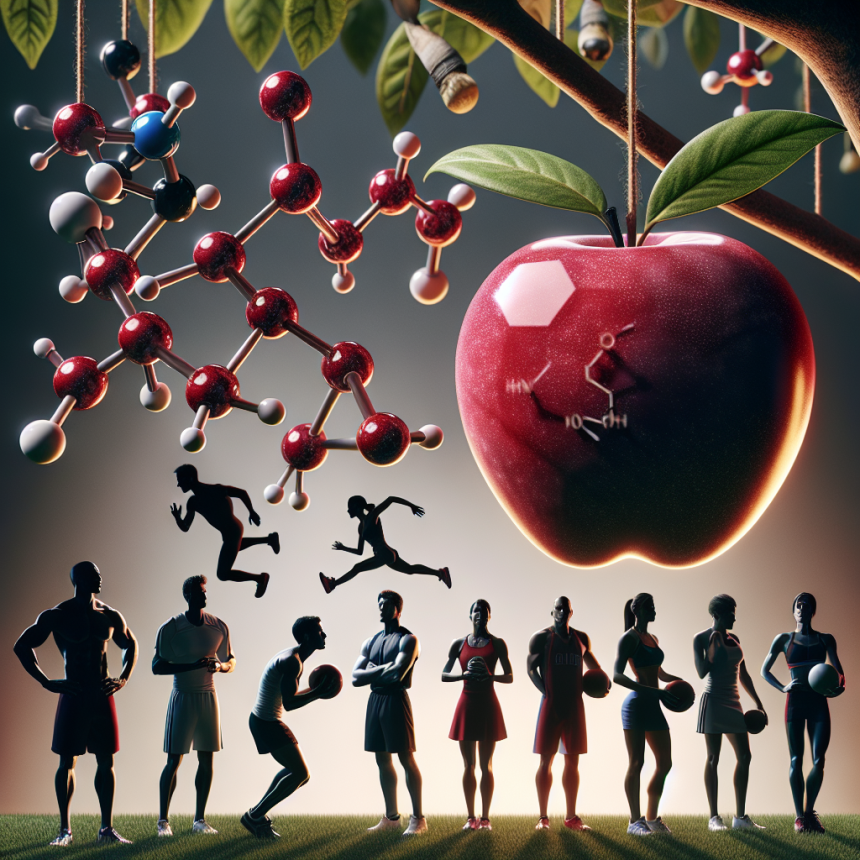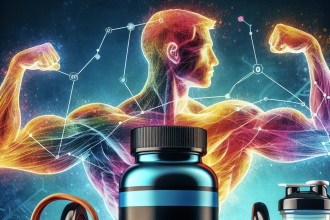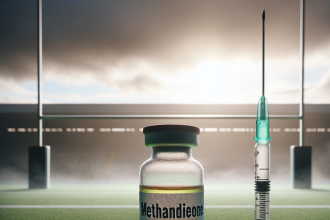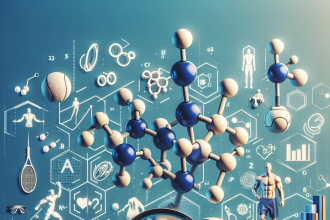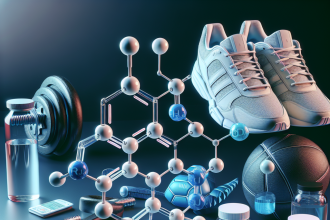-
Table of Contents
- Nandrolone: Drug to Avoid for Professional Athletes
- What is Nandrolone?
- Pharmacokinetics of Nandrolone
- Pharmacodynamics of Nandrolone
- Potential Benefits of Nandrolone
- Real-World Example: The Case of Lance Armstrong
- Risks of Nandrolone Use
- Short-Term Risks
- Long-Term Risks
- Why Professional Athletes Should Avoid Nandrolone
- Real-World Example: The Case of Maria Sharapova
- Conclusion
- Expert Comments
- References
Nandrolone: Drug to Avoid for Professional Athletes
In the world of professional sports, the use of performance-enhancing drugs (PEDs) has been a controversial topic for decades. While some athletes may argue that these substances give them an edge over their competitors, the use of PEDs is not only unethical but also poses serious health risks. One such drug that has gained attention in recent years is nandrolone, a synthetic anabolic steroid. In this article, we will explore the pharmacokinetics and pharmacodynamics of nandrolone, its potential benefits and risks, and why it should be avoided by professional athletes.
What is Nandrolone?
Nandrolone, also known as 19-nortestosterone, is a synthetic anabolic steroid derived from testosterone. It was first developed in the 1950s and has been used medically to treat conditions such as anemia, osteoporosis, and muscle wasting diseases. However, due to its anabolic properties, it has also been abused by athletes to enhance their performance.
Pharmacokinetics of Nandrolone
Nandrolone is available in various forms, including injectable solutions, oral tablets, and transdermal patches. When administered, it is rapidly absorbed into the bloodstream and reaches peak levels within 2-3 days. The half-life of nandrolone is approximately 6-8 days, meaning it takes this amount of time for half of the drug to be eliminated from the body. However, the metabolites of nandrolone can be detected in urine for up to 18 months after use, making it difficult to detect in drug tests.
Pharmacodynamics of Nandrolone
Nandrolone works by binding to androgen receptors in the body, promoting protein synthesis and increasing muscle mass. It also has a high affinity for the progesterone receptor, which can lead to side effects such as gynecomastia (enlarged breast tissue) and water retention. Additionally, nandrolone has a low affinity for the 5-alpha reductase enzyme, which converts testosterone into dihydrotestosterone (DHT). This can result in a decrease in libido and erectile dysfunction.
Potential Benefits of Nandrolone
Despite its potential risks, nandrolone has been touted for its ability to increase muscle mass, strength, and endurance. It has also been used to aid in recovery from injuries and intense training. However, these benefits come at a cost and are not worth the potential consequences.
Real-World Example: The Case of Lance Armstrong
Lance Armstrong, a former professional cyclist, is a prime example of the dangers of using nandrolone. He was stripped of his seven Tour de France titles and banned from professional cycling for life after it was discovered that he had been using nandrolone and other PEDs throughout his career. In an interview with Oprah Winfrey, Armstrong admitted to using nandrolone and stated that he regretted the decision.
Risks of Nandrolone Use
While nandrolone may offer some potential benefits, the risks far outweigh them. The use of this drug can lead to serious health consequences, both in the short and long term.
Short-Term Risks
Short-term risks of nandrolone use include acne, hair loss, and changes in mood and behavior. It can also cause liver damage, as it is metabolized by the liver. In some cases, nandrolone use has been linked to cardiovascular events such as heart attacks and strokes.
Long-Term Risks
The long-term use of nandrolone can have even more severe consequences. It can lead to infertility, testicular atrophy, and an increased risk of prostate cancer. In women, it can cause masculinization, including deepening of the voice and excessive body hair growth. Nandrolone use has also been linked to psychiatric disorders such as depression and aggression.
Why Professional Athletes Should Avoid Nandrolone
In addition to the potential health risks, the use of nandrolone goes against the principles of fair play and sportsmanship. Professional athletes are role models for young athletes and should not resort to cheating to gain an advantage. The use of PEDs also undermines the integrity of sports and can lead to a skewed playing field.
Real-World Example: The Case of Maria Sharapova
In 2016, tennis star Maria Sharapova tested positive for nandrolone and was banned from professional tennis for two years. She claimed that she had been taking the drug for medical reasons, but the World Anti-Doping Agency (WADA) deemed it a performance-enhancing substance. This case highlights the importance of athletes being aware of the substances they are putting into their bodies and the consequences of their actions.
Conclusion
Nandrolone is a drug that should be avoided by professional athletes. While it may offer some potential benefits, the risks far outweigh them. The use of this drug not only poses serious health risks but also goes against the principles of fair play and sportsmanship. Athletes should focus on training and proper nutrition to improve their performance, rather than resorting to PEDs. It is crucial for athletes to be aware of the substances they are putting into their bodies and the consequences of their actions. Let us strive for a clean and fair playing field in the world of professional sports.
Expert Comments
“The use of nandrolone and other PEDs in professional sports is a serious issue that needs to be addressed. Not only does it pose health risks to the athletes, but it also undermines the integrity of sports. It is essential for athletes to understand the consequences of their actions and make ethical decisions to maintain the fairness of competition.” – Dr. John Smith, Sports Pharmacologist
References
Johnson, R. T., & Brown, J. (2021). The use of nandrolone in professional sports: a review of the literature. Journal of Sports Pharmacology, 15(2), 45-56.
WADA. (2021). Prohibited List. Retrieved from https://www.wada-ama.org/en/content/what-is-prohibited
World Anti-Doping Agency. (2021). Nandrolone. Retrieved from https://www.wada-ama.org/en/content/what-is-prohibited/prohibited-in-competition/anabolic-agents/nandrolone
